Museums & Galleries
Landmarks & Heritage
Hidden Gems & More
Entertainment & Lifestyle
Nature & Outdoors
Landmarks and Monuments
1. Prague Castle: Explore The World’s Largest Ancient Castle Complex With Gothic Spires & Panoramic Vltava Views
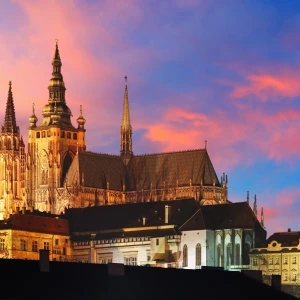
Perched atop a hill in the heart of Prague, the Prague Castle complex stands as a testament to the city's historical and architectural grandeur. A UNESCO World Heritage site, it has been an epochal center of power for kings of Bohemia, Holy Roman emperors, and presidents of Czechoslovakia. The castle, with its long and storied past, blends architectural styles from the Gothic era to the Renaissance, making it not just a beacon for historians but also for lovers of art and architecture.
The entrance to the castle is as dramatic as its history. The majestic gates open to welcome visitors ...
2. Charles Bridge: Walk The Iconic Medieval Archway Lined With Baroque Statues Over The Vltava
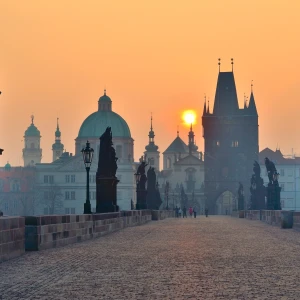
Prague, the heart of Europe, holds within its cobbled streets and bohemian enclaves a myriad of historical treasures, none more iconic than the Charles Bridge. This architectural marvel isn't just a bridge; it's a stroll through history, art, and breathtaking vistas. As a travel writer who has traversed the globe, I find the Charles Bridge to be a compelling narrative of Prague's past, present, and future, making it an essential experience for any traveler.
Construction of the Charles Bridge began in 1357 under the auspices of King Charles IV, and it was completed in the early 15th century. Since then, ...
3. Astronomical Clock: Witness The World’s Oldest Operating Medieval Timepiece & Charming Hourly Show In Prague’s Old Town Square
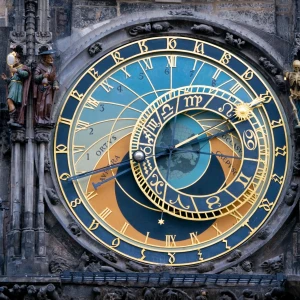
Winding through the cobbled streets of Prague, among the gothic architectures that define the city, one can't help but be drawn to the medieval charm of the Old Town Square. Here stands a marvel that has captured the imagination of visitors for centuries - the Astronomical Clock, or Pražský orloj, as it is known locally. Mounted on the southern wall of the Old Town City Hall, this clock is not merely a timekeeper but a masterpiece that encapsulates the brilliance of medieval astronomy, art, and engineering.
Constructed in 1410, the Astronomical Clock is the third-oldest astronomical clock in the world ...
4. Old Town Square: Immerse In Prague’s Historic Heart With Gothic Spires & Lively Street Culture

As a travel writer deeply enamored with the intricate dance of history and modernity, I find myself constantly drawn to places that effortlessly bridge the gap between the past and the present. One such enchanting locale is the Old Town Square, a vibrant heart pulsating at the center of many European cities, but notably, Prague's Old Town Square stands out as an ineffable blend of lore, beauty, and architectural grandeur. This historic plaza is not just a tourist attraction; it is a living museum, a testament to the resilience and artistry of past generations, and a gathering spot that brings ...
5. Petřín Lookout Tower: Climb The Eiffel-Inspired Spire For Panoramic Prague Views
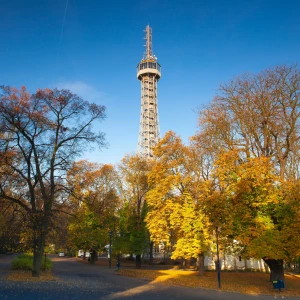
Perched atop the lush expanse of PetÅín Hill, just a leisurely walk or a funicular ride away from the heart of Prague, the PetÅín Lookout Tower (PetÅínská rozhledna) stands as a testament to human ingenuity and the timeless allure of panoramic views. Constructed in 1891 for the Jubilee Exhibition, the tower is often likened to a small sibling of the Eiffel Tower, sharing a similar lattice tower design, albeit at a more intimate scale. This remarkable structure not only occupies a special place in the skyline of Prague but also in the hearts of those who venture to its summit.
...6. Vyšehrad Castle: Discover Prague’s Legendary Riverside Fortress With Gothic Basilica & Historic Necropolis
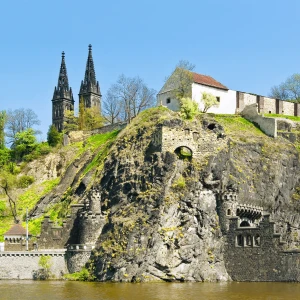
The Vyšehrad Castle, perched above the Vltava River, offers a tranquil escape from Prague's bustling city center, inviting explorers into a realm brimming with myth, legend, and beauty. This historical fortification, whose roots dig deep into the folklore and history of the Czech Republic, stands as a testament to the nation's rich heritage. The journey to Vyšehrad presents travelers with enchanting vistas, architectural marvels, and serene parks, making it a must-visit destination for those seeking to uncover the layers of Prague's storied past.
The castle's origins are shrouded in mystery, with legends dating back to the 10th century. It is ...
7. Powder Tower: Ascend The Gothic Gateway To Prague’s Old Town & Panoramic Cityscape Views
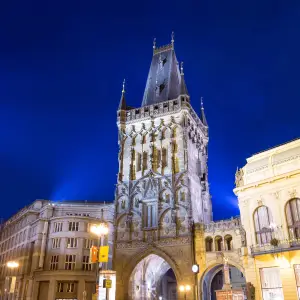
Nestled in the heart of Prague, the capital of the Czech Republic, the Powder Tower stands as a testament to the city's rich medieval heritage. This gothic tower, which was originally part of the city's defensive walls, is now one of Prague's most iconic landmarks. Its history dates back to the 11th century, initially serving as a gate to the Old Town. However, its current form was largely constructed in the late 1400s, intended as an ornamental entrance for Bohemian kings on their way to Coronation at St. Vitus Cathedral. The Powder Tower's name derives from its later use in ...
Museums and Art Galleries
8. Jewish Quarter: Wander Through Prague’s Historic Josefov With Synagogues & Cultural Treasures
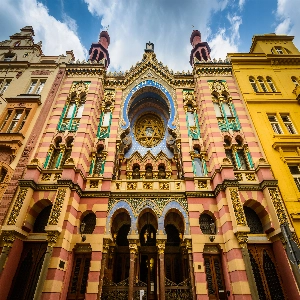
The Jewish Quarter, nestled within the heart of Jerusalem's Old City, stands as a beacon of history, culture, and deep-rooted traditions. This ancient neighborhood, with its narrow, winding streets and limestone buildings, offers a unique journey through time, telling the story of its inhabitants over the centuries. For travelers seeking to immerse themselves in the rich tapestry of Jewish heritage, the Jewish Quarter provides a perfect backdrop for exploration and discovery.
Among the must-visit landmarks in the Jewish Quarter is the Western Wall, also known as the Kotel. This revered site, the last remaining wall of the Second Temple, draws ...
9. Prague Old Jewish Cemetery: Wander Among Medieval Tombstones In Europe’s Most Historic Jewish Burial Ground

Nestled in the heart of Prague’s Josefov, the Jewish Quarter, lies one of the city’s most profound historical sites: the Old Jewish Cemetery. Established in the early 15th century, this hallowed ground served as the final resting place for Prague's Jewish community for over 300 years. Its dense layers of graves, with tombstones almost jostling for space, tell a poignant tale of time, tradition, and resilience. A visit here isn’t merely a walk through a graveyard; it’s a journey into the heart and history of Prague’s Jewish heritage.
The visual impact of the Old Jewish Cemetery is immediate and striking. ...
10. Kampa Island: A Serene Riverside Oasis Of Art, Parks & Historic Charm In Prague
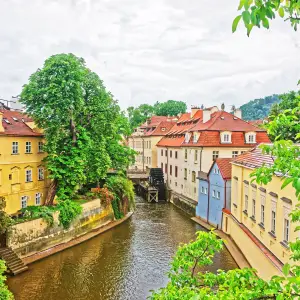
Nestled amidst the historic Vltava river in the shadow of the majestic Charles Bridge lies Prague’s hidden gem, Kampa Island. This enchanting island, often referred to as "the Venice of Prague," offers a serene escape from the bustling city life, transporting visitors into a world where the charm of old Europe is still very much alive. Kampa Island is not just a destination; it's an experience, brimming with picturesque views, intriguing museums, and lush green parks, all waiting to be explored by those who dare to venture off the beaten path.
Walking through the cobblestone streets of Kampa Island, one ...
11. Prague National Gallery: Explore Central Europe’s Premier Art Museum From Gothic Altarpieces To Cutting-Edge Contemporary Art
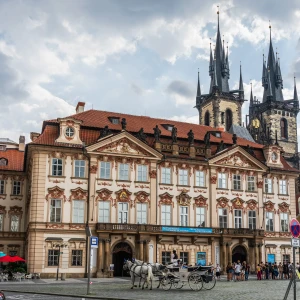
Delving into the heart of Prague's artistic heritage, the National Gallery stands as a testament to the rich tapestry of European and Czech artistry. With its multiple venues scattered across Prague, the National Gallery is not a single experience, but rather a diverse exploration of historical and contemporary works. From the fairy-tale esque convent of St. Agnes, which exhibits Medieval art, to the starkly modern Trade Fair Palace that showcases 20th-century avant-garde movements, the National Gallery offers a panorama of art that caters to every taste and epoch.
One part of the National Gallery that consistently captivates visitors is the ...
12. Explore The Museum Kampa: A Treasure Trove Of Modern Art
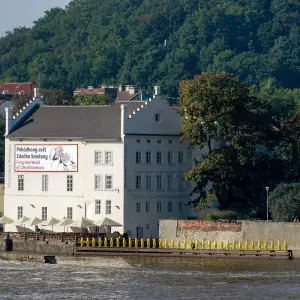
Nestled on the serene Kampa Island, which itself floats elegantly on the Vltava River in Prague, Museum Kampa is a gem waiting to be explored by those who cherish art and history alike. This museum, with its distinctive modern art collections, offers a vivid journey through Central European art, inviting visitors into a world where creativity knows no bounds. For travelers seeking a cultural immersion beyond the usual tourist paths, Museum Kampa presents an unrivaled opportunity to delve deep into the artistic endeavors that have shaped this region.
Established from the generous donation by Meda Mládek, wife of Jan V. ...
Shopping
13. Prague Zoo: Discover Central Europe’s Top-Rated Conservation Park With Rare Species & Picturesque Troja Valley Views

Nestled on the rolling banks of the Vltava River, Prague Zoo stands as a testament to wildlife conservation and an oasis of natural wonder amidst the historical grandeur of Prague. Established in 1931, the zoo has since burgeoned into a 58-hectare sanctuary that is home to over 5,000 animals from all corners of the globe, making it a must-visit for nature lovers and families alike. Its commitment to the preservation of rare and endangered species places it among the world's most esteemed zoological gardens.
The Prague Zoo's layout is a deliberate nod to the natural habitats of its residents, offering ...
Historical Sites
14. Memorial To The Victims Of Communism: Reflect At Prague’s Sobering Bronze Sculpture Honoring Political Repression
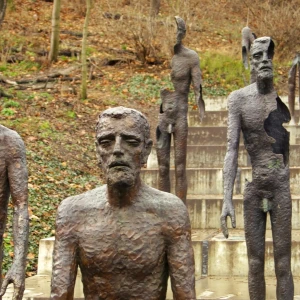
Located at the base of PetÅín Hill on Újezd street, this outdoor installation by sculptor Olbram Zoubek and architects Jan and JiÅí Novotný presents a haunting procession of life-size figures gradually eroding into the pavement. Unveiled in 2002, it stands as one of Europe’s most powerful public commemorations of political imprisonment, forced labor, and exile under Communist regimes. A visit here offers a powerful moment of reflection amid Prague’s historic streetscape.
What to ExpectThe memorial comprises seven bronze statues spaced along roughly 50 meters of cobblestone sidewalk. Each figure appears more fragmented than the last—first solid and whole, ...
Waterfront Activities
15. Kafka Museum: Explore Franz Kafka’s Life & Surrealist Legacy In Prague’s Immersive Exhibition
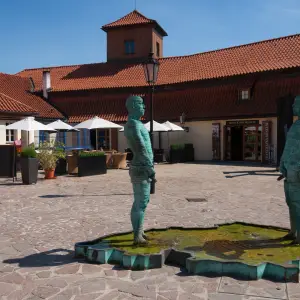
Stepping through the streets of Prague, a city that seamlessly melds the past with the present, one can't help but feel the echoes of its storied history. Among the many cultural jewels that Prague has to offer, the Franz Kafka Museum stands out as a beacon for literature aficionados and history buffs alike. This museum, dedicated to one of the most influential figures in 20th-century literature, offers visitors an intimate glimpse into the life and work of Franz Kafka, whose masterful writings have enthralled readers worldwide.
Located in the scenic Malá Strana district, near the enigmatic waters of the Vltava ...
Architecture and Design
16. Dancing House: Admire Prague’s Deconstructivist Icon With Riverfront Flair & Panoramic Vltava Views

Nestled on the banks of the Vltava River in Prague, the Dancing House stands as a testament to innovative architectural design and artistic triumph. Officially named "Nationale-Nederlanden building" after the Dutch insurance company that originally commissioned it, this remarkable structure is more popularly referred to by its affectionate nickname inspired by its unique shape. The building, envisioned by the visionary minds of Croatian-Czech architect Vlado MiluniÄ and Canadian-American architect Frank Gehry, was completed in 1996 and has since become one of the most distinctive landmarks in a city renowned for its historic architecture.
The Dancing House's allure isn't just its ...
Hidden Gems and Off-the-Beaten-Path
17. Lennon Wall: Discover Prague’s Ever-Changing Canvas Of Peace-Inspired Street Art & Beatles Tribute
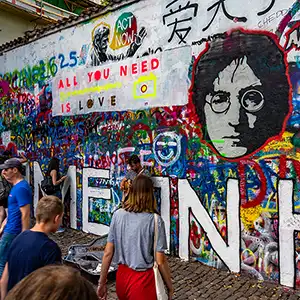
When wanderlust whispers its sweet call, travelers often seek destinations flush with history, splashed with art, and oozing cultural richness. Nestled in the heart of Prague, the Lennon Wall stands as a testament to the enduring power of words and the indomitable spirit of peaceful resistance. It's more than just a wall; it's a living, breathing canvas of human emotion, political protest, and artistic expression that has attracted visitors from around the globe for decades.
The origins of the Lennon Wall trace back to the 1980s, a time of great political turmoil in Czechoslovakia. Originally an ordinary wall, it was ...
18. Explore The Enigmatic Josefov Neighborhood: A Glimpse Into Prague's Jewish Heritage

Nestled within the heart of Prague, the Josefov neighborhood is a tapestry of history, culture, and architectural marvel. Once the Jewish ghetto of the city, it has transformed over centuries into a vibrant area that pays homage to its rich past while celebrating the present. Josefov's narrow winding streets, each telling a tale, lead the curious traveler into a world that masterfully blends the antiquity of its buildings with the vivacity of modern European life.
Arguably the most compelling aspect of Josefov is its well-preserved Jewish monuments, including Europe's oldest active synagogue, the Old-New Synagogue (Staronová Synagoga), dating back to ...
Literary and Cultural Heritage
19. Franz Kafka Monument: Experience Prague’s Surreal Tribute To The Literary Icon In Moving Stainless-Steel Layers
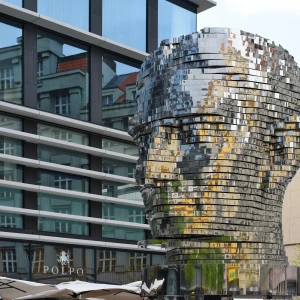
Nestled in the heart of Prague, a city that boasts an array of captivating historical sites, stands a monument that pays homage to one of the most enigmatic figures in literature - Franz Kafka. This tribute is not just a mere statue; it is a journey into the surreal and complex world that Kafka portrayed through his writings. The Franz Kafka Monument, designed by the renowned Czech artist Jaroslav Róna and unveiled in 2003, is an embodiment of the peculiar and often perplexing nature of Kafka's literary genius.
The monument is strategically located near the Spanish Synagogue in the Jewish ...
Music and Performances
20. National Theatre: Experience Czech Opera, Ballet & Drama In Prague’s Historic Performing Arts Icon
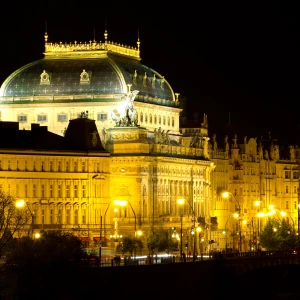
Stepping into the National Theatre is akin to embarking on a voyage through the epitome of artistic brilliance. Located at the heart of London's vibrant South Bank, this iconic institution is not only a monument to British theater but also a beacon for international performances. With its diverse array of productions, from timeless Shakespearean plays to groundbreaking contemporary works, the National Theatre offers an unparalleled cultural experience that speaks to both the connoisseur and the casual visitor alike. Its striking brutalist architecture, designed by Sir Denys Lasdun, stands as a testament to the boldness and vitality of the performing arts ...
Religious and Spiritual Sites
21. St. Vitus Cathedral: Marvel At Gothic Mastery & Royal Tombs In Prague Castle’s Crown Jewel
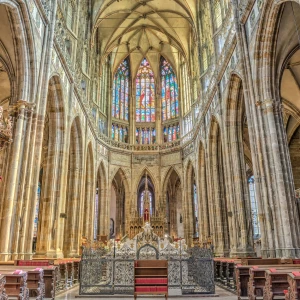
Embarking on a journey to Prague, the heart of Bohemia, visitors find themselves swept away by the tapestry of history and culture that drapes every street and alley. Among the myriad of architectural jewels the city boasts, St. Vitus Cathedral stands out as a Gothic masterpiece, an emblem of spiritual significance and an enduring testament to artistic endeavor. Nestled within the historic confines of Prague Castle, this cathedral is not just a monument but a chronicler of Czech history, bearing witness to coronations, burials, and the many sagas of saints and kings.
The construction of St. Vitus Cathedral, commenced in ...
22. Church Of Our Lady Before Týn: Marvel At Gothic Twin Spires & Intricate Baroque Altars In Prague’s Old Town
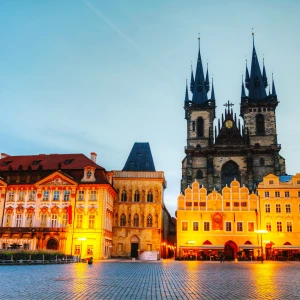
Nestled in the vibrant heart of Prague, the Church of Our Lady before Týn stands as a magnificent testament to the city's rich architectural heritage. With its towering spires and gothic façade, it beckons visitors from all corners of the globe, promising a journey into the captivating world of medieval art and history. This iconic church not only dominates the skyline of Prague's Old Town Square but also encapsulates centuries of turbulent history, making it an essential visit for anyone captivated by the allure of the past.
The construction of the Church of Our Lady before Týn is cloaked in ...
23. Prague Loreto: Visit The Baroque Pilgrimage Complex With Iconic Santa Casa & Chiming Clock Tower
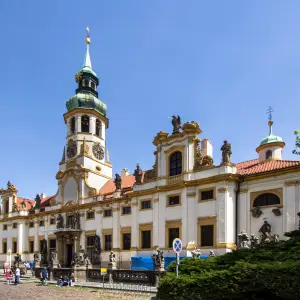
Nestled in the heart of the Czech capital, the Prague Loreto holds a prestigious spot among the myriad of historic and cultural attractions that adorn this vibrant city. This baroque masterpiece is not just a place of pilgrimage; it's a treasure trove of art, history, and spirituality that captures the essence of Central European heritage. Its picturesque façade and the spiritual tranquility within offer a unique experience that stands out, even in a city as rich in attractions as Prague. For the discerning traveler looking to explore beyond the surface of popular tourist spots, the Loreto presents a compelling narrative ...











